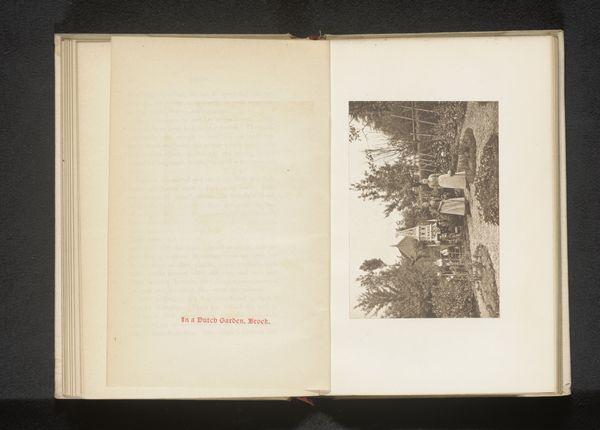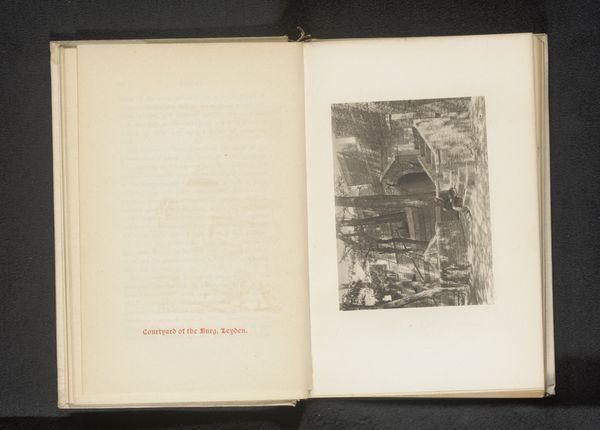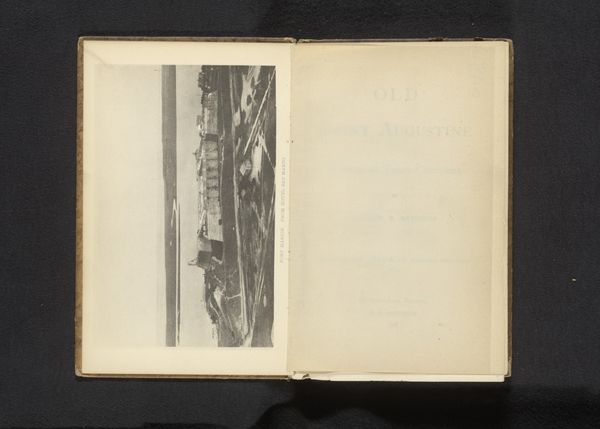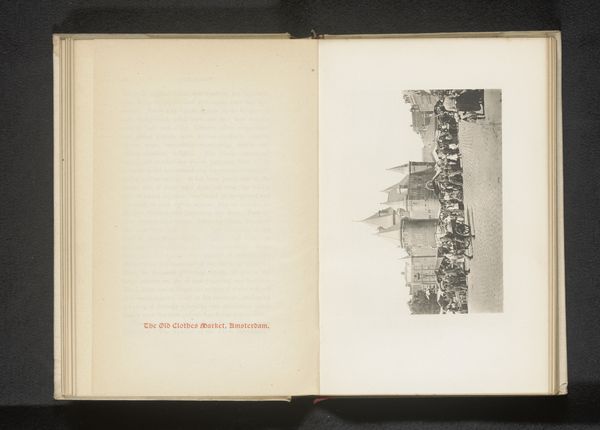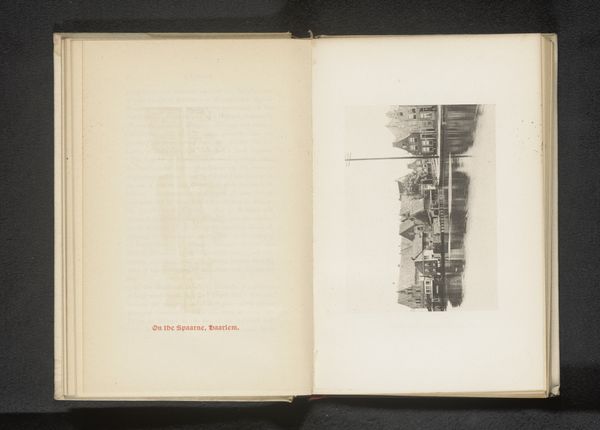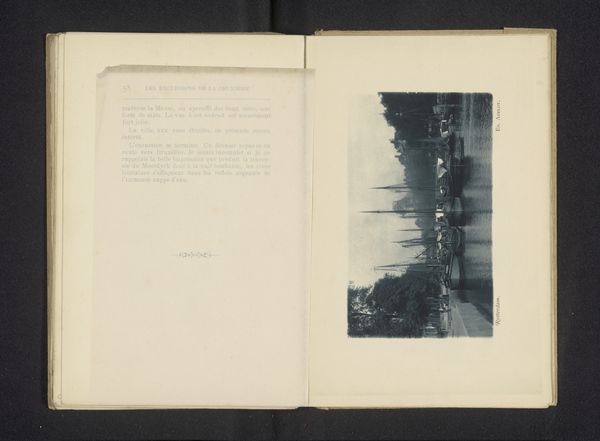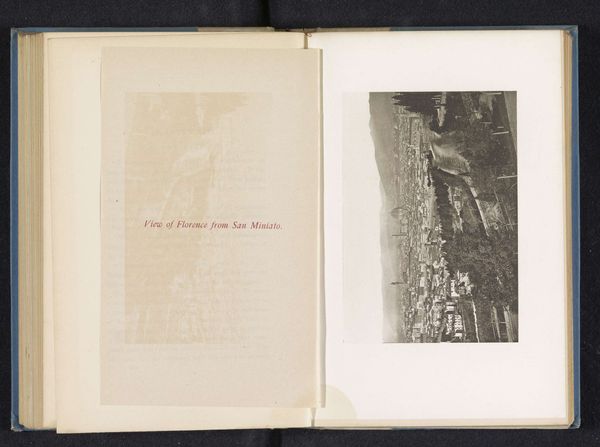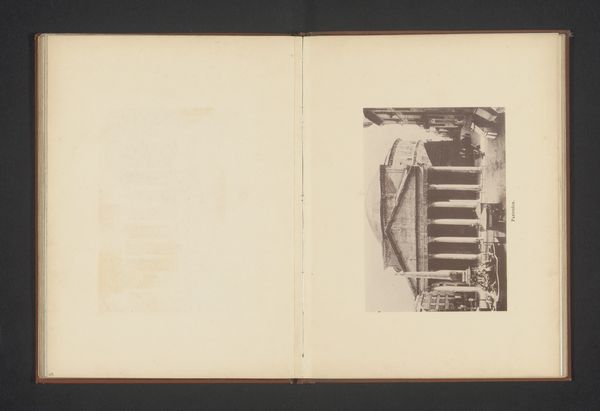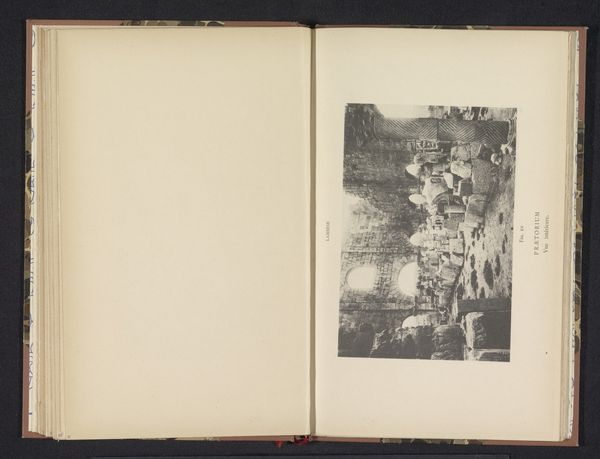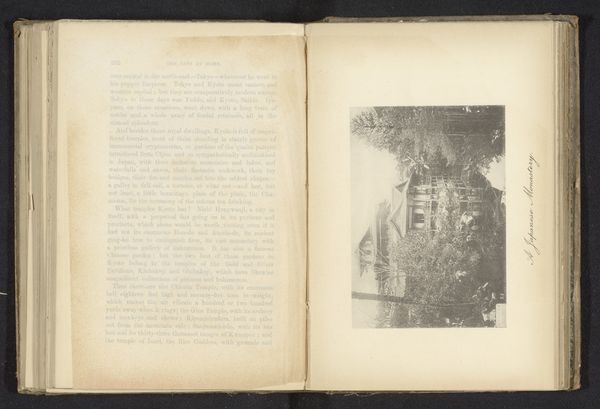
photography, albumen-print
#
aged paper
#
homemade paper
#
paper non-digital material
#
paperlike
#
light coloured
#
sketch book
#
landscape
#
paper texture
#
photography
#
personal sketchbook
#
fading type
#
folded paper
#
albumen-print
Dimensions: height 88 mm, width 119 mm
Copyright: Rijks Museum: Open Domain
Editor: Here we have “Gezicht op een laan naar Scheveningen,” or “View of an avenue to Scheveningen,” an albumen print from before 1894. It’s presented within the pages of a sketchbook or album. I’m really struck by the tones—the aged paper lends a certain warmth. What visual elements stand out to you? Curator: The composition immediately grabs my attention. The artist employs a strong perspectival line, drawing the eye deep into the scene. The avenue itself acts as a powerful vector, and the flanking trees create a rhythmic series of vertical elements. Observe how the tonal range, though limited, defines the forms, moving from darker shades at the sides to lighter values in the center, emphasizing depth. Editor: So it’s less about what is depicted, and more about how it's depicted? The lines, shapes, and tones? Curator: Precisely. The success of the image rests upon its formal relationships. Consider the texture of the paper, its contribution to the overall aesthetic experience. Note also how the albumen print process renders details—observe how light and shadow describe the avenue and foliage. This print allows us to deconstruct the artist's method in choosing and rendering the lines that articulate depth and movement within a relatively confined pictorial space. Do you agree with this emphasis on the compositional structure over representational elements? Editor: I see what you mean. Thinking about the print as a collection of lines, tones, and textures allows me to appreciate it on a completely different level. Curator: And focusing on how the artist manipulated these intrinsic qualities to create depth is more instructive than reading the picture for anecdotal detail. Editor: I’ll definitely look at photographs differently now. It’s not always about the subject, but about how all these shapes create this cohesive, interesting work of art.
Comments
No comments
Be the first to comment and join the conversation on the ultimate creative platform.

